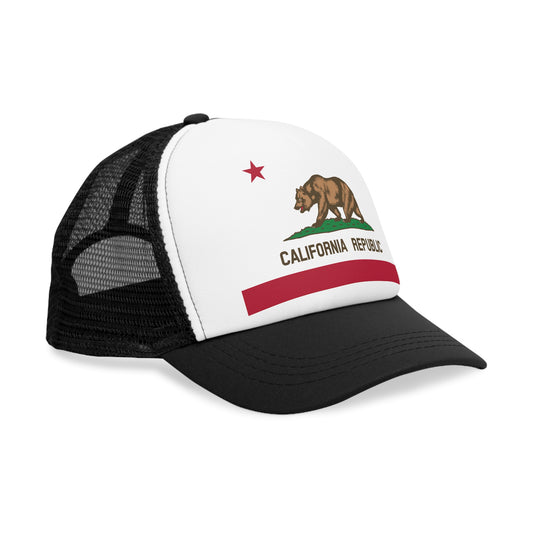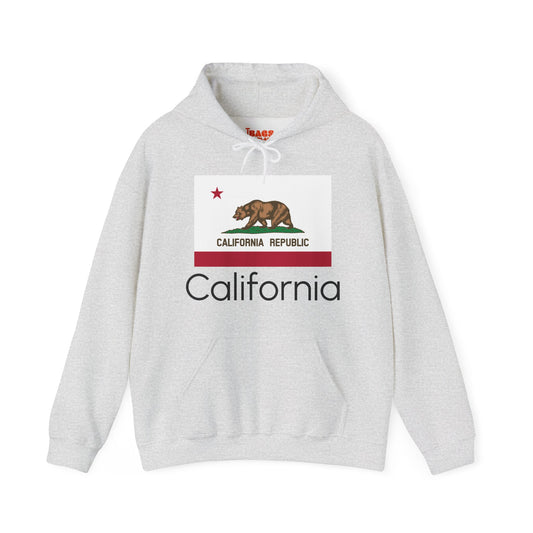-
California Mug
Regular price $11.65 USDRegular priceUnit price / per -
California Backpack
Regular price $59.79 USDRegular priceUnit price / per -
California Pillow
Regular price $22.65 USDRegular priceUnit price / per -
California Sweatshirt
Regular price $34.15 USDRegular priceUnit price / per -
California Trucker Cap
Regular price $14.90 USDRegular priceUnit price / per -
California Flag Sweatshirt
Regular price $34.15 USDRegular priceUnit price / per -
California Leather Patch Hat
Regular price $18.85 USDRegular priceUnit price / per -
California Hoodies
Regular price $34.40 USDRegular priceUnit price / per -
California T-shirts
Regular price $22.79 USDRegular priceUnit price / per -
California Flag Hoodies
Regular price $34.40 USDRegular priceUnit price / per -
California Flag T-shirts
Regular price $22.79 USDRegular priceUnit price / per -
California Flag – 3x5ft
Regular price $34.16 USDRegular priceUnit price / per
Collection: US State: California CA flag
The California flag is a prominent symbol of the state's identity, with its vibrant colors and striking design. This flag has a rich history and holds significant meaning for the people of California. We will delve into the design, historical context, symbolism, current relevance, and additional facts about the California flag.
Overview of the California Flag

The flag of California, often referred to as the Bear Flag presents a unique and recognizable design that immediately stands out due to its simplicity and symbolic elements. A pure white background distinguishes it, contrasted with a horizontal red stripe at its base. Prominently featured in the center is a single red star, a common symbol of sovereignty and independence, which resonates with California's tumultuous history.
Dominating the flag's imagery is the silhouette of a grizzly bear, depicted in a posture of forward motion, symbolizing strength and endurance. This figure is accompanied by the words "California Republic," a nod to the state's brief period as an independent republic before joining the United States. The use of red in both the stripe and the star adds a vibrant contrast to the flag, infusing it with vitality and courage. Together, these elements combine to create a flag that is not only visually striking but deeply infused with the historical and cultural ethos of California.
Historical Context of the California Flag
The original iteration of the California flag emerged from the tumult of the Bear Flag Revolt in 1846, a pivotal event in the state's path toward statehood. American settlers, driven by a desire for independence from Mexican rule, proclaimed the California Republic, marking the revolt with a hastily designed banner that bore the image of a grizzly bear and a lone star - symbols of strength and autonomy.
This emblem of revolt was a precursor to the state flag adopted in 1911, encapsulating California's brief stint as an independent entity. The flag has since remained a tangible link to California's storied past, capturing the spirit and resilience of its people during a transformative period in American history. Over the years, while the design has seen slight modifications, the essence of the flag's inception—a testament to the state's enduring quest for liberty and self-determination—continues to resonate through its symbolic imagery. This rich historical tapestry sets the California flag apart, embedding it with significance far beyond its visual appeal.
Symbolism of the California Flag
At the heart of the California flag lies a tapestry of symbols, each carrying a weight of historical and cultural significance that speaks volumes about the state's identity. The prominently featured grizzly bear is not merely an animal figure but a representation of the indomitable spirit and raw power of California and its inhabitants. This mighty creature, once roaming the state freely, serves as a metaphor for the unyielding resolve and independence that characterized the early settlers’ quest for sovereignty during the Bear Flag Revolt.
Elevated above the bear, the lone red star shines as a beacon of aspiration, mirroring the solitary star on the original Bear Flag of 1846. It reflects California's enduring pursuit of growth and excellence, acknowledging its historical roots as a self-proclaimed republic before becoming an integral part of the United States. The red star also resonates with the broader narrative of freedom and self-determination, aligning California with other places and movements that have similarly employed single stars to symbolize their cause.
The flag's color scheme is imbued with its own layer of symbolism. Red, utilized in the star and the strip at the bottom, evokes a sense of courage and sacrifice, a nod to the bravery of those who fought for California's independence. Meanwhile, the white background offers a stark contrast, representing purity and unity, suggesting a blank canvas upon which the state continuously evolves. Together, these elements encapsulate the essence of California's heritage, its ongoing journey, and the values that continue to shape its destiny.
Current Relevance of the California Flag
Today, the California flag remains a vibrant emblem of state pride and identity, prominently featured across various contexts, from educational institutions to sports events. Its image adorns merchandise, is a favorite among tourists, and symbolizes unity and resilience in times of state-wide challenges such as natural disasters. The flag's presence at national events and military ceremonies underscores its role in representing California on various platforms, highlighting the state's significance within the broader context of the United States.
Despite its ubiquity, the flag has not been immune to critique and debate. Discussions around its symbols, particularly the grizzly bear, have sparked conversations about conservation, historical accuracy, and the portrayal of California's heritage. These dialogues contribute to a nuanced understanding of the flag’s legacy and its place in contemporary society, ensuring that it continues to be a subject of state pride and thoughtful examination.
Additional Facts About the California Flag
While iconic in its design and symbolism, the California flag is governed by etiquette rules that dictate its display and handling, underscoring the reverence with which it is treated. Notably, the flag must be displayed to ensure it does not come into contact with the ground, reflecting a universal flag protocol aimed at preserving the flag's dignity and respect. An intriguing aspect of the flag is the depiction of the California grizzly bear.
These species have not roamed the Californian wild since 1924, rendering the symbol a poignant reminder of the state's rich biodiversity and the impact of human activity on native species. Over the decades, the flag has experienced subtle modifications, yet these changes have not diluted its core symbolism or its deep-seated meaning for Californians. This enduring emblem of state identity continues to inspire and unite, serving as a visual narrative of California's past, present, and future aspirations.
























